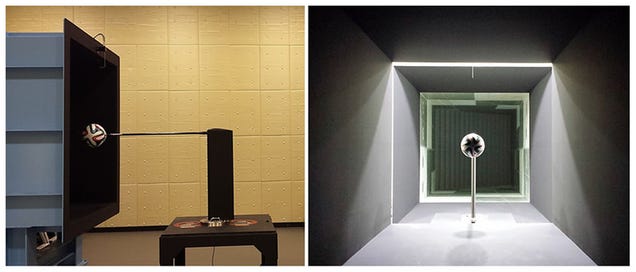FIFA's New World Cup Ball Is The Fastest And Most Aeodynamic Yet
When the 2014 FIFA World Cup gets started on June 12 in Brazil, the world's greatest soccer players will be booting around one of the most advanced balls ever created for the sport — and the science proves it.
Called Brazuca, it was developed by Adidas. Here's what makes it unique:
 SEXPAND
SEXPAND

Called Brazuca, it was developed by Adidas. Here's what makes it unique:
- It has six polyurethane panels that are bonded to keep the ball the same weight and roundness in even the thickest of rain (it's the first time a ball has had so few panels)
- The never-before-seen panel shape revolutionizes the game by producing faster flight speed and maintaining true roundness
- The bladder of the Brazuca ball is made of latex and provides the desired rebound
- The ball is textured and feels more like the Adidas' Finale 13, the official UEFA Champions League ball, than the Adidas Jabulani used in South Africa four years ago
- The adidas Brazuca ball, in a bold white/night blue/multicolor colorway befitting Brazil, is the most colorful ever for a FIFA World Cup
Typically, soccer balls are made from 32 pentagonal and hexagonal panels. Recently, however, newer balls have featured 14 and 8 panel designs. But with this six-panel design, the ball is expected to exhibit optimal aerodynamic continuity and flight speed.
 SEXPAND
SEXPAND
To prove it, Japanese researcher Sungchan Hong used wind tunnel tests and a kick-robot to examine the relationship between the panel shape and orientation of modern footballs and their aerodynamic and flight characteristics. The results now appear in Nature: Scientific Reports. Tim Newcomb from Popular Mechanics summarizes it nicely:
Hong says the new ball has a "stable flight trajectory thanks to the shape and number of panels that it is constructed from." The characteristics of the panels on a soccer ball have a "substantial impact on how the ball travels through the air," Hong says.Hong and Takeshi Asai tested the balls by mounting them in a wind tunnel to test aerodynamic properties. They also used robots to kick the ball toward a goal 25 meters away and measure ball rotations, final impact point, and trajectories. Curiously, while Adidas has been steadily reducing the number of panels over the years, the scientists found that less isn't always more. While the six-panel Brazuca was the best performer, a conventional 32-panel ball followed it closely, the study says. Adidas is happy to forget the eight-panel knuckling Jabulani from the 2010 World Cup in South Africa—goalkeepers decried its fluttering and strikers lamented its inconsistency.The Brazuca and the 32-panel ball had "relatively stable" data, whereas other balls in the study differed greatly based on how the ball's panels were facing prior to the robot's impact. "The changes in the flight characteristics (points of impact) of Cafus and Teamgeist 2 with the panel orientation were particularly drastic, which indicated that their panel orientation significantly affected their flight characteristics," the researchers say.
